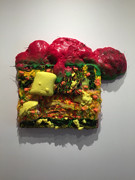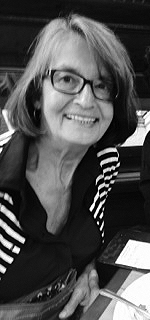Putting Pattern Knowledge to Work
Promoting Innovative Thinking in Art and Science
“Art is the imposing of a pattern on experience,
and our aesthetic enjoyment is recognition of the pattern.”
Alfred North Whitehead, 1943

…Pattern Journey…….Nature Patterns Journey……Fractal Journey……Tessellations Journey
Patterns, one of seven Crosscutting Concepts in the Next Generation Science Standards (NGSS), offer an array of possibilities for promoting innovative thinking through trans-disciplinary instruction. The pervasiveness of patterns in human experience gives the concept a central place in the school curriculum. Not in science and engineering, alone, but in art and design, mathematics, social studies, reading, and writing, children are taught to recognize patterns in the natural and human designed world, something the human brain is exceptionally adept at doing. “Every moment of every day we organize the random events we see, hear, and feel by grouping them,” write Robert and Michelle Root-Bernstein.(1)
“Our ability to recognize patterns is the basis for our ability to make predictions and form expectations.”
Apparently, some of us even have pattern knowledge for sandwich, as I discovered during a recent visit to the David Klein Gallery in Detroit. Kari Cholnoky, whose work was on exhibit, pushes the boundaries of abstraction with a material list that includes faux fur, acrylic, synthetic hair, epoxy putty, collage, and urethane foam. Yet, as I stood in front of the painting pictured below, I saw sandwich, which, as it turns out, is the title Cholnoky chose for the painting.
Patterns are pervasive, and they provide unique opportunities to promote innovative thinking. The problem is that, until recently, pattern knowledge has been largely siloed within disciplinary domains. Further, because patterns are everywhere present, students often have been expected to build pattern knowledge without any explicit instructional support. With the crosscutting concepts now embedded in the science curriculum, the NGSS shift this expectation to include explicit instruction in patterns, as in each crosscutting concept.(2) And through the lead of scholars such as the Root-Bernsteins at Michigan State University and Donn L. Marrin, a hydrochemist working at the intersections of art and science, pattern knowledge is breaking through discipline boundaries to inform fertile, trans-disciplinary collaborations.
As educators, formal or informal, our task is to foster the pattern recognition abilities of students – their ability to observe, describe, and analyze the patterns of forms and events they experience daily. We’re also concerned with promoting their pattern forming abilities – the capacity to use words, numbers, images, and objects to form new patterns of perception; in short, the capacity to innovate.
Through research into the lives of creative individuals, the Root-Bernstein have discovered the ubiquity of diverse solutions to mathematical and scientific problems that result from new patterns of perception. Just as there are diverse styles of painting, there are multiple formulations of scientific and mathematical solutions, for example, “at least seven different evolutionary trees consistent with available evidence [and] more than 450 valid representations of the periodic table of elements.” However, it is not, they note, the number of creative solutions to a problem that is significant, but what the multiple formulations “allow us to do.”
“The specific patterns we invent to embody our understanding of things have different limitations and different strengths [think fractions vs. decimals]– no single pattern is ever the end all or be all of a subject….[T]he more patterns we invent to circumscribe, define, and express our experience of the world, the more real knowledge we possess and the richer we are in understanding.
“Learning to create patterns is … one of the keys to innovating in every discipline.”(3)
When the task of instruction is to nurture creative, innovative thinkers, organizing our own pattern knowledge is a good place to begin. But where do we put the stake in the ground? When patterns exist everywhere, how can we, as teachers and guides, organize pattern knowledge in ways that will help students develop the ability to see and create patterns of meaningful information in all domains?
In Part Two of Putting Patterns to Work, I’ll suggest an answer to that question.
1.Robert and Michelle Root-Bernstein, Sparks of Genius: The 13 Thinking Tools of the World’s Most Creative People. (Boston: Houghton Mifflin Company, 1999. First M Mariner Books Edition, 2001), p. 92-93
2.Chapter: 4 Dimension 2: Crosscutting Concepts. A Framework for K-12 Science Education: Practices, Crosscutting Concepts, and Core Ideas (2012)
3.Ibid., 132.
Debra Henning, M.A. University of Chicago
Curriculum and Instruction
STEM to STEAM and Design Learning Consultant
LinkedIN




















































